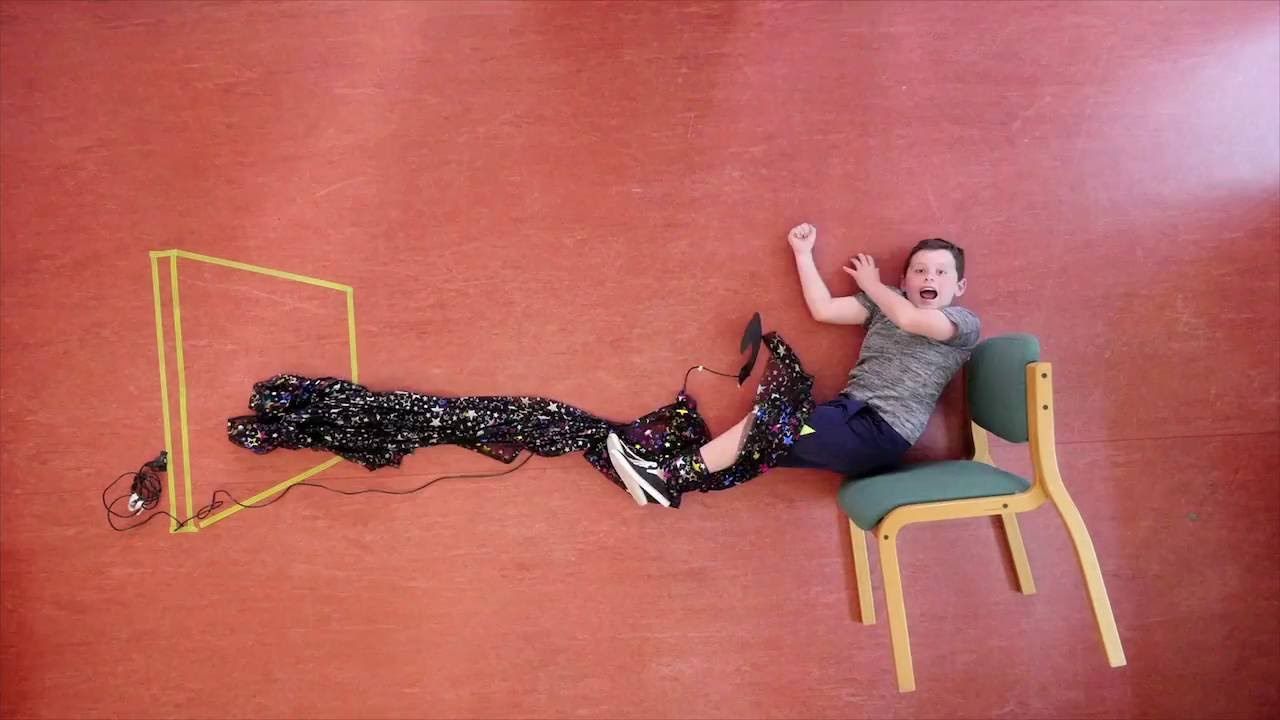Recently, animation has become a powerful storytelling tool for kids and teenagers alike, which effortlessly blends traditional art with technology. In this race, merging stop-motion aesthetics with 3D animation has been the most visually captivating trend. This hybrid approach has gained the attention of game designers, filmmakers, and digital artists; thus, they are transforming how animated stories are sculpted.
However, if you are someone new to this blend and want to experiment with it, this article is for you. Here, you will gain deeper insights into the handcrafted charm of stop-motion and the hyper-realistic depth of 3D environments. Thus, keep reading to learn stop motion animation types, techniques, tips, and prime examples, all on one go.
Part 1. What is Stop Motion Animation?
It's an advanced flipbook-style animation form that involves photographing and physically manipulating objects afterward in each frame. When each frame gets sequentially played, the effect of an object moving itself gets delivered. Hence, as the stop motion technique lies within each frame of action, attention to detail is vital for each snap of the setup.
In simple words, this animation captures one frame with physical objects that move between frames, and when you play back the sequence of images, it creates a movement illusion. Anyhow, when you ask, "what is stop frame animation," remember it's just another name for stop-motion. Also, know that it's the same as the 2D drawn animation of early Disney days, but with a difference of using physical objects.
Part 2. Types of Stop Motion Animation
Before you move ahead, remember stop motion animation is a broader term, and several techniques come under it that bring inanimate objects to life. To get a closer look, you must read the following types of stop motion:
1. Claymation
The first one is Claymation, which comes under the stop motion definition by bringing flexibility and expressions in modeling characters. Artists use malleable clay or plasticine figures as the animation mediums to sculpt. They make wire skeletons called armatures and adjust them slightly later in each frame to show movements, facial changes, and exaggerated features.

2. Pixilation
In the list, the second is pixilation, which uses real people as stop motion subjects, often actors who pose frame by frame to create surreal and jerky motions. Here, live human actors and real-world objects blend with animation principles for experimental films. Though it created eye-catching aesthetics, it required extreme precision and patience from actors, which is hard to bring these days.

3. Cutout-Motion
This animation type involves moving flat characters and props made of cards, cloth, or paper, who get repositioned each time in a photographed frame. Cutout motion uses flat paper or fabric characters and backgrounds as animation medium, whereas 2D components moving on flat service is considered its key feature. No doubt, it's a cost-effective type, but it has a limited range of motions, as evident through South Park (early episodes).

4. Puppet Animation
Puppet animation is considered great for storytelling with complex characters since it includes 3D puppets as an animation medium. Among puppet stop frame animation films, the viral one is The Nightmare Before Christmas, which has a classic vibe with a Halloween theme. Regarding operations, this type uses fully constructed puppets with moveable joints, often made with fabric, silicone, or foam for intricate gestures.

5. Silhouette Animation
As the name depicts, this type tells a story through shadows and outlines using black backlit paper cutouts. To create one silhouette animation, artists manipulate cutouts in front of light sources and capture scenes that appear as black silhouettes. It is one of the oldest animation techniques that is being used today for showing dreams and flashback sequences in films.

Part 3. How to Shoot in Stop-Motion?
Whether you are adopting Claymation or puppet animation, the answer to “What is stop motion animation?" will remain the same, with varied tweaks. Hence, let's learn how to shoot in stop-motion through the following point-by-point discussion:
- Pre-Production Planning: First off, you need a clear concept and engaging script containing strong sequences and poses. Then, choose a medium and start building characters with materials like fabric or foam before selecting a soft and diffused lighting setup.
- Arrange Equipment: After planning, get a smartphone with a good camera or manage a DSLR along with a sturdy tripod to avoid movement. Besides, you must download and buy subscriptions to apps like Stop-Motion Studio or Blender.
- Start Animation Process: Now, move your created subjects slightly and take photographs at the standard frame rate, which is 12-24fps. To be consistent, use onion skinning and take test shots that show how movements look.
- Post-Production: Finally, import all frames sequentially to editing software and adjust their frame rates or trim errors, whatever is needed. In addition, you should add music or sound effects that resonate with scenes perfectly while incorporating lighting flares and transitions.
Part 4. The Stop-Motion Style in 3D Animation
Today, movies with stop-motion animation are the most liked ones, leading artists to create one of their own. Therefore, below are some techniques and styles they should know before getting their hands on blending stop motion and 3D animation:
- Borrowing Physical Simulation: Since gravity and weight affect objects' movements, animators simulate physics selectively, and rather than relying on automated physics engines, they mimic the nuanced resistance.
- Subtle Movement Techniques: Here, artists deliberately skip frames and eliminate in-betweens for jerky and frame-by-frame motions that resemble physical puppetry.
- Materiality and Texture: As materials like clay and wood leave textures, 3D artists add realistic textures and surface irregularities for the illusion that characters are handcrafted.
- Character Design and Emotional Expression: 3D artists try to preserve expressive body language and exaggerate facial features of stop-motion with minimal facial rigging during character design.
- Imperfect Frame Transitions: Imperfection is the beauty of stop-motion and 3D animators replicate this intentionally through small inconsistencies such as camera jitters and non-uniform motion arcs.
Tips for 3D Animators: Improve 3D Animation Rendering Efficiency
Now, you must be ready to create your own stop-motion animation movie upon learning all of its dynamics. However, the only hurdle you can face is limited device resources, which could significantly delay your creative project while rendering complex 3D scenes. To avoid such delays and keep your system lag-free for post-processing, use Fox Renderfarm cloud computing services.

Instead of relying on your local machine for computational power, take assistance from its CPU and GPU rendering as much as your project needs. This render farm has a user-friendly interface that you will easily adapt for uploading and downloading projects. Nevertheless, it facilitates users with a 24/7 customer-support service team available to reply within 15 minutes.
Key Features
- API Supported: It automatically detects your systems' IT environment to match cloud infrastructure service and streamline rendering. Besides, it supports API integration, which means the service can be integrated into your production pipelines, and you don't need to access its interface manually.
- High-Speed Transmission: With Raysync's high-speed transmission, Fox Renderfarm provides extremely quick services, no matter the file size you upload or download. Additionally, it fires up thousands of rendering nodes and contains high-performance SSD storage solutions.
- Security & Confidentiality: For rendering an animation film that is super confidential yet, remember the service is ISO27001 certified and has an NDA (Non-Disclosure Agreement). Also, know that it has a good reputation for rendering reputable projects like Ne Zha 2 and Oni: Thunder God's Tale.
- Multi-Platform Support: This rendering service supports nearly all 3D animation software and plugins, such as Blender, Cinema 4D, and VRay. Despite that, you can access the service on your system with 99.9% uptime, no matter if you have a Mac, Linux, or usual Windows computer.
- Flexible Pricing: Being a newbie in animation, you don't have to worry about the budget since you can apply for special discounts for freelancers, teachers, or students. Otherwise, one can get a $25 free render coupon on their first registration.
Part 5. 3D Animation Films That Feature the Stop-Motion Style
Before concluding the discussion, let us shed light on the 3 best stop-motion animation films of all time:
1. Coraline (2009)
Created by Laika studio, this puppet stop-motion animation-style movie belongs to the gothic fairy tale and whimsical genre. It incorporated over 200,000 facial expressions using replacement animation and rapid prototyping with 3D printers. Moreover, this classic film was adapted from a Neil Gaiman YA novel where a young girl discovers an alternate universe beyond the secret door.

2. Kubo and the Two Strings (2016)
Another animated film by Laika Studio was Kubo and the Two Strings, which used hybrid stop-motion and CGI techniques of stop motion. This stop frame animation example animated characters simply but enhanced the environment through effects and epic battle sequences via CGI. Additionally, with Japanese-inspired art direction, this award-winning movie featured the largest stop-motion puppets ever created, which were 16 feet tall.

3. Corpse Bride (2005)
By evoking classic Gothic romance and German expressionism, this movie gained popularity in 2005 and made its name in stop-motion animation. It used puppets with mechanical face controls, shot digitally, and fine motorized controls for smooth performances. Anyhow, this movie by Warner Bros studio presents haunting visuals with memorable music, beautifully showcasing 17th-century Jewish folklore.

Conclusion
To sum up, stop motion animation isn't a new art technique but bringing new concepts by blending into 3D animation. This article highlighted it in detail, from types to examples and ways of shooting. Now, if you are ready to create your own movie with this style, you are advised to take the Fox Renderfarm rendering service to streamline workflow. It will render your complex scenes without needing local compositional power.














